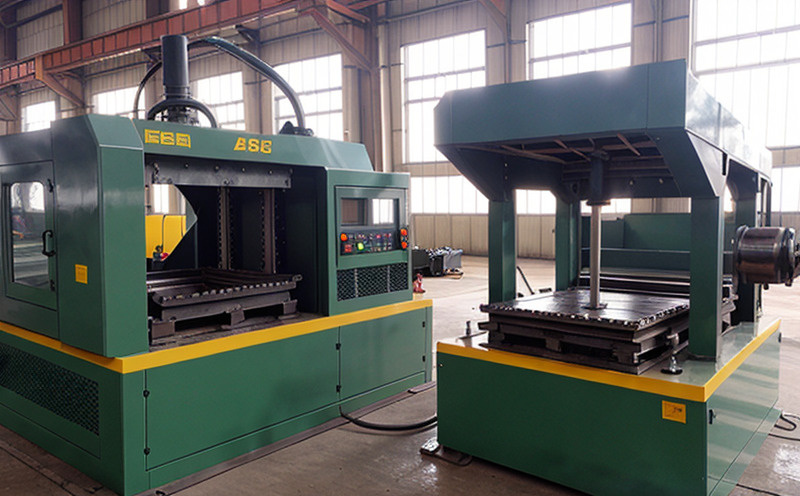ASTM A609 Ultrasonic Testing of Forged Products
The ASTM A609 standard provides a comprehensive framework for ultrasonic testing (UT) of forged products. This service is crucial in ensuring the structural integrity and quality control of materials used in various industrial applications, particularly where high-strength steel forgings are involved.
Forging processes subject metals to significant deformation and stress, which can lead to internal defects such as cracks, laminations, or segregation that may not be visible on the surface. Ultrasonic testing is an essential non-destructive technique (NDT) for detecting these defects without altering the material's properties. The ASTM A609 standard specifies the requirements for the ultrasonic examination of carbon steel and low alloy steel forgings.
The process involves sending high-frequency sound waves into the forging using a probe, which then reflects back from internal flaws or changes in material structure. The reflected echoes are analyzed to determine the presence and size of defects within the material. This non-destructive approach allows for precise quality control during manufacturing processes, ensuring that only defect-free products enter further stages of processing.
The ASTM A609 standard emphasizes the importance of proper specimen preparation, which includes cleaning the surface to remove any contaminants or oxides, and ensuring that the test area is free from external influences. The use of appropriate coupling agents ensures efficient transmission of sound waves across the material interface. Calibration of ultrasonic equipment according to the standards mentioned in ASTM A609 is also critical for accurate testing.
Compliance with ASTM A609 is mandatory for industries that rely heavily on forged components, such as aerospace, automotive, and heavy machinery manufacturing sectors. By adhering to these stringent guidelines, manufacturers can ensure their products meet the highest quality standards, thereby enhancing product reliability and safety.
The ASTM A609 standard also covers the interpretation of test results, including the use of reference blocks for calibrating probes and establishing acceptance levels based on defect sizes relative to specified limits. This ensures consistency in testing across different facilities and operators, contributing significantly to the overall quality assurance process.
In summary, ASTM A609 ultrasonic testing plays a pivotal role in maintaining high standards of product integrity by identifying defects early in the manufacturing cycle. It supports industries that demand reliability and safety in their products, making it an indispensable service for ensuring compliance with international standards.
Benefits
- Enhanced Product Quality: Detects internal defects before they become critical issues.
- Cost Efficiency: Reduces the need for rework and scrap, lowering overall production costs.
- Improved Safety: Ensures that only defect-free products enter further stages of processing or end use.
- Compliance with Standards: Ensures adherence to international standards like ASTM A609.
Competitive Advantage and Market Impact
By incorporating ASTM A609 ultrasonic testing into their quality control protocols, companies can gain a significant competitive edge in the market. This service not only enhances product reliability but also fosters trust among customers by demonstrating a commitment to high-quality manufacturing practices.
In the aerospace and automotive industries, where safety is paramount, the ability to identify and eliminate defects early in the production process translates into safer products that meet stringent regulatory requirements. This can lead to increased market share as consumers become more aware of the benefits of defect-free components.
For suppliers seeking to establish long-term relationships with key industry players, compliance with ASTM A609 standards is often a prerequisite. By offering this service, manufacturers demonstrate their capability to meet rigorous quality expectations, thereby opening doors to lucrative contracts and partnerships.
The use of ultrasonic testing according to ASTM A609 also supports broader market trends towards sustainability and efficiency. By reducing waste through early defect detection, companies contribute positively to environmental goals while optimizing resource utilization within their operations.
Use Cases and Application Examples
| Industry Sector | Component Type | ASTM A609 Requirement | Application Example |
|---|---|---|---|
| Aerospace | Engine Parts | UT for detecting internal flaws in castings. | Detection of internal cracks and laminations in turbine blades. |
| Automotive | Bolster Plates | UT to ensure material homogeneity. | Inspection of bolster plates before assembly into car frames. |
| Heavy Machinery | Forged Shafts | UT for identifying surface and subsurface defects. | Mining equipment shafts undergoing quality checks. |





